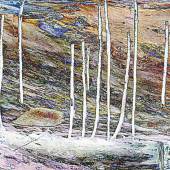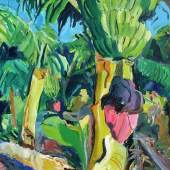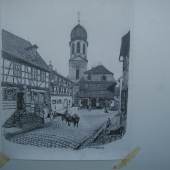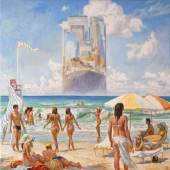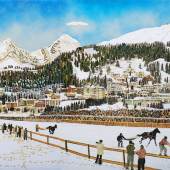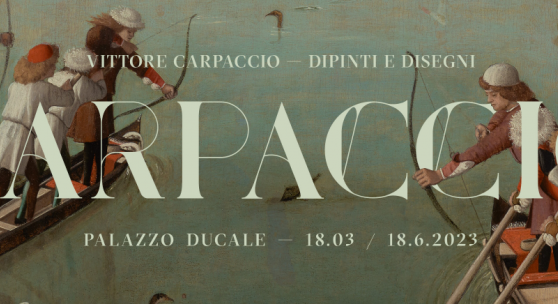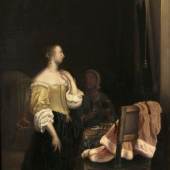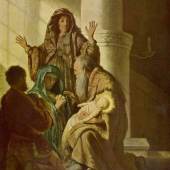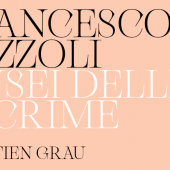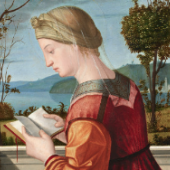VITTORE CARPACCIO. Paintings and drawings
-
Ausstellung18.03.2023 - 18.06.2023
The paintings of Vittore Carpaccio (c. 1460/66 – c. 1525/26) splendidly celebrate Venice at the turn of the 15th century, when the Serenissima ruled a vast maritime and commercial empire and flourished as a major centre of culture. In fact, Carpaccio, a stage director and set designer with a particular flair for the poetic and fantastic, transported into real life the narrative cycles of the biblical and religious stories he created for various confraternities, designing fantastic scenarios enriched with endless details, together with contemporary references to the society and surroundings of his extraordinary city.
Perhaps even more than the work of other Venetian Renaissance artists, Carpaccio’s art replenishes us with the very essence of ‘Venetian-ness’, namely the pageantry and mythology of the Serenissima Republic at its economic and cultural peak. Carpaccio was an inventive painter of religious subjects for public and private use (altar paintings, organ doors, Madonna and Child images, profound meditations on the Passion of Christ, etc.) but he also created works for institutional and domestic civic life (portraits, painted furniture and unusual furnishings, such as the folding door with the famous panel of the Due dame in the Correr Museum, which is on show, temporarily reunited with the Caccia in valle scene placed above, which completed it. Although Carpaccio’s work was rediscovered and appreciated by art historians between the end of the 19th century and the first half of the 20th century, during the last half-century it has been somewhat neglected by historiography, especially its place in the critical reconstruction of stylistic developments from Giovanni Bellini to Giorgione and Titian. This is confirmed by the fact that no solo exhibition of Carpaccio’s work has been held since 1963, the year of his historic exhibition at the Doge’s Palace.
Today, at last – especially following not only recent discoveries and new attributions, but also extraordinarily revealing restorations of the major narrative cycles still preserved in Venice – an up-to-date historical and critical reinterpretation of Carpaccio’s painting and its evolution is considered necessary. With these essential objectives in mind, the tried and tested collaboration between the Fondazione Musei Civici di Venezia and the National Gallery of Art Washington, under the direction of Peter Humfrey, an acknowledged scholar specialised in the painter and his context, has led to the creation of an exhibition in both Washington and Venice, based on a systematic selection of the artist’s best works.
The intention is to trace thematically and chronologically the rigorous development of Carpaccio’s painting from an updated perspective. In doing so, the exhibition also takes advantage of the existence of a substantial group of Carpaccio’s drawings, which represent the largest surviving corpus of early Renaissance drawing studies. They reveal Carpaccio’s unique imagination, the rigour of his technique, together with his interests in perspective, nature and light.
Paintings and drawings loaned from major museums and private collections in Europe and the United States, as well as ones from churches in Venice and the former territories of the Serenissima, conserved there since their creation, mean that slightly differentiated selections, organised in specific thematic groupings appear in each of the two venues. Unlike the exhibition in Washington – the first dedicated to Carpaccio in the United States – the one in Venice will refer to the essential chapter of the great narrative cycles (St. Ursula in the Gallerie dell’Accademia, commissioned by the Scuola Dalmata dei Santi Giorgio e Trifone) and will attempt the temporary reconstruction of ones dispersed (the Stories of the Virgin, commissioned by the Scuola degli Albanesi). The Venetian exhibition focuses on a reconstruction of the painter’s artistic and creative journey from the earliest works of his youth to his finest mature works. Lastly, the exhibition will also attempt to evaluate more accurately the hitherto severely judged final period of his activity, which coincided with the emergence of the innovative tonal painting of Giorgione and Titian and their new aesthetic.
-
14.09.2019Anita Rée gehört zu den Künstlerinnen, die sich auf dem Kunstmarkt durchgesetzt haben. Ihr Talent...
-
Museum Wasserburg, Anholt Rembrandts "Das Bad der Diana und die Geschichten von Aktäon...
-
17.04.2024 - 24.11.2024In the last decade, Francesco Vezzoli has extended his artistic path that has led him to create a...
-
18.03.2023 - 18.06.2023
9.00 – 18.00 (last entrance at 17.00) from 01/04/2023 to 18/06/2023 9.00 – 19.00 (last entrance at 18.00)
